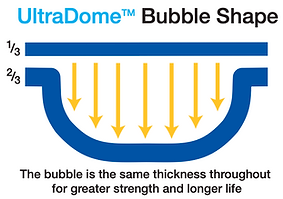
Swimming Pool Covers

Minimise water consumption & reduce pool maintenance costs with a swimming pool cover.
Let the sun heat your pool water by up to 8ºC and retain heat by insulating your pool with our durable and long-lasting bubble-style covers. The natural heating and insulating saves you energy while also stopping evaporation. These covers are perfect to use on all pools, especially when the sun hits the cover, helping you gain maximum benefits.
Heat your water with the sun
Stop evaporation
Insulate and save heat loss
Proudly Australian Made
Our pool covers are a popular choice for pool owners on the Sunshine Coast because of their insulation properties which help to prevent heat from escaping and can actually raise the temperature of a pool.
The pool covers from Suncoast Pool Plumbing & Heating remain Australia’s favourite thanks to their innovative design which prevents up to 99% of the evaporation in your pool.
Pool Cover Range
The trademarked UltraDomeTM technology
All pool blankets have a finite useful life and will eventually deteriorate due to the effects of exposure to sunlight and highly corrosive pool chemicals.
The pool covers we supply combine maximum durability, heating and heat-retention performance, and value-for-money. The UltraDomeTM bubble profile produces a ‘bubble’ layer of consistent thickness and without weak points. This bubble layer is bonded during manufacture to a second layer of PE. It is the bubble layer which is in contact with the pool water and corrosive chemicals whenever the blanket is in use.
The UltraDomeTM profile ensures that a full two-thirds of the total PE material is contained in the lower layer. This profile creates a more durable blanket. The upper blanket layer must resist degradation by UV radiation from the sun, and some contact with pool water and chemicals.




However, the bubble layer is subject to both UV radiation and constant exposure to pool chemicals while the blanket is in use. A thicker bottom layer will simply resist degradation for longer.
This fact has been independently confirmed by tests on a range of polyethylene, polyvinyl chloride (PVC) and polyethylene foam/PVC covers conducted by JLA Francey and BP Gleisner of the Monash University Physics Department.




